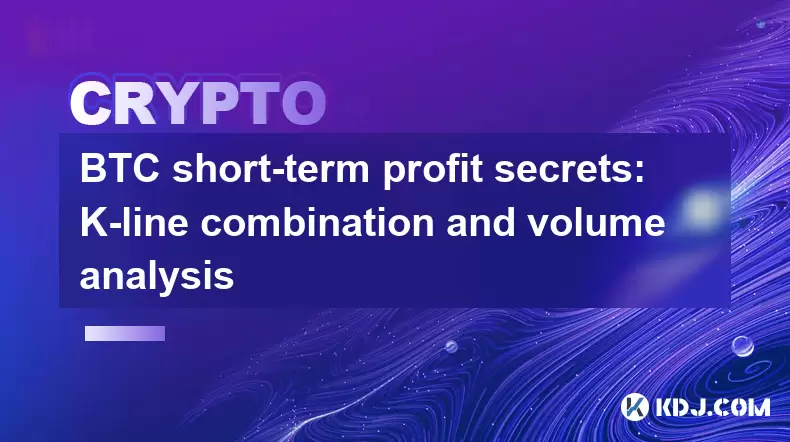-
 Bitcoin
Bitcoin $116700
0.48% -
 Ethereum
Ethereum $4213
6.27% -
 XRP
XRP $3.280
1.22% -
 Tether USDt
Tether USDt $1.000
0.02% -
 BNB
BNB $805.1
2.46% -
 Solana
Solana $180.2
2.65% -
 USDC
USDC $0.0000
0.02% -
 Dogecoin
Dogecoin $0.2412
8.50% -
 TRON
TRON $0.3356
-1.11% -
 Cardano
Cardano $0.8108
3.59% -
 Hyperliquid
Hyperliquid $43.89
8.53% -
 Chainlink
Chainlink $21.15
10.75% -
 Stellar
Stellar $0.4502
1.41% -
 Sui
Sui $3.935
4.69% -
 Bitcoin Cash
Bitcoin Cash $570.7
-1.75% -
 Hedera
Hedera $0.2636
3.28% -
 Avalanche
Avalanche $24.25
4.48% -
 Ethena USDe
Ethena USDe $1.001
0.03% -
 Litecoin
Litecoin $122.0
-0.08% -
 Toncoin
Toncoin $3.445
2.68% -
 UNUS SED LEO
UNUS SED LEO $8.979
-0.08% -
 Shiba Inu
Shiba Inu $0.00001379
6.73% -
 Uniswap
Uniswap $10.91
2.00% -
 Polkadot
Polkadot $4.106
5.39% -
 Dai
Dai $1.000
0.02% -
 Pepe
Pepe $0.00001227
9.07% -
 Bitget Token
Bitget Token $4.507
0.72% -
 Cronos
Cronos $0.1576
3.40% -
 Monero
Monero $272.0
-1.68% -
 Ethena
Ethena $0.7502
21.27%
BTC short-term profit secrets: K-line combination and volume analysis
Use K-line combinations like bullish engulfing and volume analysis to spot high-probability Bitcoin trades; confirm trends with high volume for short-term profits.
Jun 03, 2025 at 12:01 pm

BTC short-term profit secrets: K-line combination and volume analysis
In the fast-paced world of Bitcoin trading, understanding the nuances of K-line combinations and volume analysis can significantly enhance your ability to secure short-term profits. K-line charts are essential tools for traders, providing a visual representation of price movements over time. When combined with volume analysis, these charts offer insights into market sentiment and potential price directions. This article will delve into the specifics of K-line combinations and how volume analysis can be used to identify profitable trading opportunities in the Bitcoin market.
Understanding K-Line Combinations
K-line charts, also known as candlestick charts, are fundamental to technical analysis in cryptocurrency trading. Each K-line represents the price movement of Bitcoin within a specific timeframe, showing the open, high, low, and close prices. K-line combinations refer to patterns formed by consecutive K-lines, which can indicate potential market trends and reversals.
Bullish Engulfing Pattern: This pattern occurs when a small bearish K-line is followed by a larger bullish K-line that completely engulfs the previous K-line. It suggests a potential reversal from a downtrend to an uptrend, signaling a good entry point for buying Bitcoin.
Bearish Engulfing Pattern: The opposite of the bullish engulfing pattern, this occurs when a small bullish K-line is followed by a larger bearish K-line that engulfs the previous K-line. It indicates a potential reversal from an uptrend to a downtrend, signaling a good entry point for selling Bitcoin.
Doji: A Doji K-line occurs when the open and close prices are virtually the same, forming a cross-like shape. It signifies market indecision and can signal potential trend reversals, depending on its position within the trend.
Hammer and Hanging Man: Both patterns feature a small body with a long lower shadow. A hammer appears during a downtrend and suggests a potential bullish reversal, while a hanging man appears during an uptrend and suggests a potential bearish reversal.
Volume Analysis Basics
Volume analysis is another critical aspect of technical analysis, providing insights into the strength behind price movements. Volume represents the number of Bitcoin units traded within a specific timeframe and can confirm or refute the signals given by K-line patterns.
High Volume: When a price movement is accompanied by high volume, it suggests strong market interest and confirms the validity of the trend. For instance, if a bullish K-line pattern is supported by high volume, it increases the likelihood of a sustained uptrend.
Low Volume: Conversely, low volume during a price movement indicates weak market interest and can suggest that the trend may not be sustainable. If a bearish K-line pattern occurs with low volume, it might indicate a false signal or a potential reversal.
Integrating K-Line Combinations with Volume Analysis
To maximize short-term profits in Bitcoin trading, it is crucial to integrate K-line combinations with volume analysis. This approach allows traders to filter out false signals and identify high-probability trading opportunities.
Confirming Bullish Signals: When a bullish K-line pattern, such as a bullish engulfing pattern, is accompanied by high volume, it confirms the strength of the bullish trend. Traders can enter long positions with confidence, anticipating further price increases.
Confirming Bearish Signals: Similarly, a bearish K-line pattern, such as a bearish engulfing pattern, supported by high volume, confirms the strength of the bearish trend. Traders can enter short positions, expecting further price declines.
Identifying Reversals: Volume analysis can also help identify potential trend reversals. For example, if a Doji K-line appears during an uptrend and is accompanied by increasing volume, it might indicate that the uptrend is losing momentum and a reversal is imminent.
Practical Application in Bitcoin Trading
To apply K-line combinations and volume analysis effectively in Bitcoin trading, traders need to follow a systematic approach. Here’s how you can do it:
Select a Timeframe: Choose a timeframe that aligns with your trading strategy. For short-term profits, shorter timeframes like 15-minute or 1-hour charts are often preferred.
Identify K-Line Patterns: Scan the chart for recognizable K-line patterns, such as bullish or bearish engulfing patterns, Dojis, hammers, and hanging men.
Analyze Volume: Check the volume bars corresponding to the identified K-line patterns. Look for high volume to confirm the strength of the signal and low volume to question its validity.
Enter and Exit Trades: Based on the confirmed signals, enter long or short positions accordingly. Set stop-loss orders to manage risk and take-profit orders to secure profits.
Real-World Examples
To illustrate the practical application of K-line combinations and volume analysis, let’s consider a few real-world examples from Bitcoin trading.
Example 1: A trader notices a bullish engulfing pattern on a 1-hour Bitcoin chart. The pattern is accompanied by a significant increase in volume, confirming the bullish signal. The trader enters a long position and sets a stop-loss below the low of the engulfing pattern. As the price continues to rise, the trader exits the position at a predetermined take-profit level, securing a short-term profit.
Example 2: On a 15-minute chart, a bearish engulfing pattern emerges, but the volume is relatively low. The trader decides to wait for further confirmation before entering a short position. Later, another bearish K-line pattern appears with high volume, confirming the downtrend. The trader enters a short position and exits at a profit when the price reaches the target level.
Example 3: During an uptrend, a Doji K-line appears on a 1-hour chart, signaling potential market indecision. The volume starts to increase, suggesting that the uptrend might be losing steam. The trader anticipates a reversal and enters a short position, setting a stop-loss above the high of the Doji. As the price reverses, the trader exits the position at a profit.
Frequently Asked Questions
Q1: Can K-line patterns and volume analysis be used for long-term Bitcoin investments?
A1: While K-line patterns and volume analysis are primarily used for short-term trading, they can also provide valuable insights for long-term investments. Long-term investors can use these tools to identify major trend reversals and confirm the strength of long-term trends, helping them make informed decisions about when to enter or exit positions.
Q2: How important is it to use multiple timeframes when analyzing K-line patterns and volume?
A2: Using multiple timeframes is crucial for a comprehensive analysis. Shorter timeframes can help identify immediate trading opportunities, while longer timeframes provide a broader view of market trends. By aligning signals across different timeframes, traders can increase the accuracy of their predictions and make more confident trading decisions.
Q3: What are some common mistakes traders make when using K-line patterns and volume analysis?
A3: Common mistakes include relying solely on K-line patterns without confirming them with volume analysis, entering trades based on incomplete patterns, and ignoring the broader market context. Traders should also avoid overtrading and ensure they have a solid risk management strategy in place to protect their capital.
Q4: How can traders improve their skills in analyzing K-line patterns and volume?
A4: To improve their skills, traders should practice regularly on historical data, use demo accounts to test strategies without risking real money, and stay updated with market news and developments. Joining trading communities and learning from experienced traders can also provide valuable insights and feedback.
Disclaimer:info@kdj.com
The information provided is not trading advice. kdj.com does not assume any responsibility for any investments made based on the information provided in this article. Cryptocurrencies are highly volatile and it is highly recommended that you invest with caution after thorough research!
If you believe that the content used on this website infringes your copyright, please contact us immediately (info@kdj.com) and we will delete it promptly.
- Trump, Crypto Vehicle, and WLFI Tokens: A New York Minute on the Latest Buzz
- 2025-08-10 00:30:12
- Wheat Penny Fortune: Unearthing Valuable Coins in Your Pocket Change
- 2025-08-10 00:35:19
- AI Coin Mania: Dubai Millionaires Eye 20x Gains!
- 2025-08-09 23:10:12
- ChatGPT's Hot Takes: Meme Coins to Buy Now for a Wild 2025!
- 2025-08-09 23:10:12
- Jurassic Park Vibes in Your Pocket: The Colourful Canadian Coin Featuring a Dinosaur Eye
- 2025-08-09 23:50:12
- Altcoins on the Radar: VeChain, Ethereum, and the Shifting Crypto Landscape
- 2025-08-09 23:50:12
Related knowledge

Can the Bitcoin protocol be changed?
Aug 07,2025 at 01:16pm
Understanding the Bitcoin ProtocolThe Bitcoin protocol is the foundational set of rules that govern how the Bitcoin network operates. It defines every...

What happens to Bitcoin transactions once they are confirmed?
Aug 09,2025 at 05:22am
Understanding Bitcoin Transaction ConfirmationWhen a Bitcoin transaction is initiated, it is broadcast to the network and placed in a pool of unconfir...

How are Bitcoin transactions verified?
Aug 08,2025 at 06:57am
Understanding Bitcoin Transaction VerificationBitcoin transactions are verified through a decentralized network of nodes and miners that ensure the le...

How does decentralization make Bitcoin secure?
Aug 08,2025 at 09:35am
Understanding Decentralization in BitcoinDecentralization is a foundational principle of Bitcoin's architecture and plays a critical role in its secur...

What are some common misconceptions about Bitcoin?
Aug 07,2025 at 07:22pm
Bitcoin is Just Like Regular MoneyA widespread misconception is that Bitcoin functions identically to traditional fiat currencies like the US dollar o...

What is the role of nodes in the Bitcoin network?
Aug 08,2025 at 04:14pm
Understanding the Function of Nodes in the Bitcoin NetworkNodes are fundamental components of the Bitcoin network, serving as the backbone that ensure...

Can the Bitcoin protocol be changed?
Aug 07,2025 at 01:16pm
Understanding the Bitcoin ProtocolThe Bitcoin protocol is the foundational set of rules that govern how the Bitcoin network operates. It defines every...

What happens to Bitcoin transactions once they are confirmed?
Aug 09,2025 at 05:22am
Understanding Bitcoin Transaction ConfirmationWhen a Bitcoin transaction is initiated, it is broadcast to the network and placed in a pool of unconfir...

How are Bitcoin transactions verified?
Aug 08,2025 at 06:57am
Understanding Bitcoin Transaction VerificationBitcoin transactions are verified through a decentralized network of nodes and miners that ensure the le...

How does decentralization make Bitcoin secure?
Aug 08,2025 at 09:35am
Understanding Decentralization in BitcoinDecentralization is a foundational principle of Bitcoin's architecture and plays a critical role in its secur...

What are some common misconceptions about Bitcoin?
Aug 07,2025 at 07:22pm
Bitcoin is Just Like Regular MoneyA widespread misconception is that Bitcoin functions identically to traditional fiat currencies like the US dollar o...

What is the role of nodes in the Bitcoin network?
Aug 08,2025 at 04:14pm
Understanding the Function of Nodes in the Bitcoin NetworkNodes are fundamental components of the Bitcoin network, serving as the backbone that ensure...
See all articles

























































































